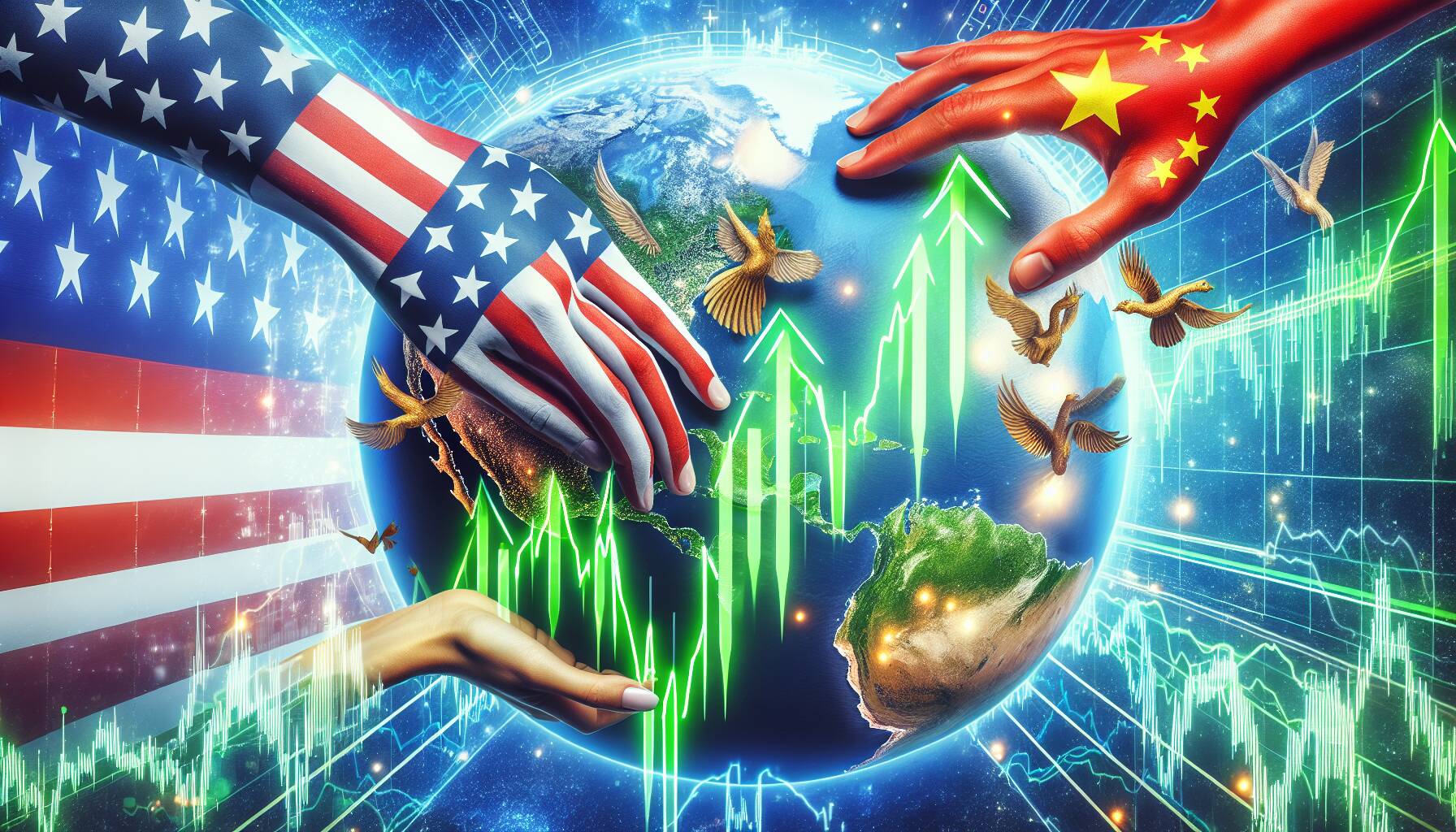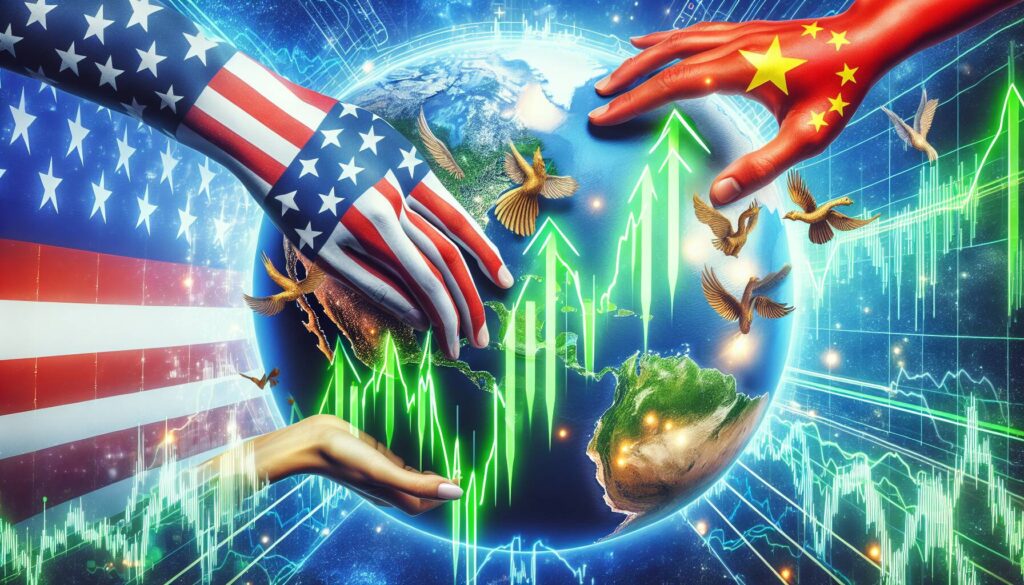In a significant development for financial markets, a recent thaw in trade relations between the U.S. and China has sparked optimism, leading to a surge in various risk assets, including cryptocurrencies. This shift comes in the wake of comments from U.S. Treasury Secretary Scott Bessent, who emphasized the unsustainable nature of current tariffs and trade barriers while announcing plans for an upcoming meeting in Switzerland with Chinese officials.
“The current tariffs and trade barriers are unsustainable, but we don’t want to decouple,” said Bessent, reflecting a notable desire for dialogue amidst ongoing tensions.
Chinese authorities have responded positively, with a spokesperson from the Ministry of Commerce confirming that the country is open to discussions regarding tariff adjustments. Acknowledging the importance of both U.S. and Chinese interests, the spokesperson noted, “China has carefully evaluated these messages from the U.S. side and has decided to agree to engage with the U.S.” This cooperative stance is seen as a response to global economic expectations and appeals from American industries.
The immediate impact of these developments has been felt across markets. Following the announcement, Bitcoin (BTC) surged approximately 3%, climbing to $97,200, while U.S. stock futures for the Nasdaq 100 and S&P 500 saw a boost of about 1%. This alignment in trade discussions highlights the interconnectedness of global economies and underscores the influence of geopolitical factors on market movements.
As investors continue to monitor these evolving trade dynamics, the willingness of both nations to engage in dialogue could pave the way for a more stable economic environment, benefiting various sectors, including crypto assets. The conversation around tariffs is not just a matter of trade; it’s a signal of broader economic cooperation that could shape the landscape of global finance in the coming months.

Thawing Trade Relations Between U.S. and China
The recent shift in trade sentiment between the U.S. and China has significant implications for global markets and individual investors. Here are the key points from the article:
- U.S. and China Adjusting Trade Policies:
- Both countries are recognizing that current tariffs and trade barriers are unsustainable.
- U.S. Treasury Secretary Scott Bessent plans to hold trade talks in Switzerland with Chinese counterparts.
- Signals of Engagement:
- Senior U.S. officials are hinting at potential adjustments to tariffs.
- China’s Ministry of Commerce has responded positively, indicating a willingness to engage on tariff-related issues.
- Market Reaction:
- Positive news is driving assets higher, including a 3% rise in bitcoin, bringing its price to $97,200.
- U.S. stock market futures show gains, with Nasdaq 100 and S&P 500 rising by about 1%.
“The current tariffs and trade barriers are unsustainable, but we don’t want to decouple.” – U.S. Treasury Secretary Scott Bessent
Understanding these developments can influence how readers manage their investments and stay informed about market trends, potentially leading to better financial decisions in a fluctuating economic environment.
New Trade Discussions Ignite Market Optimism
The recent developments surrounding the thaw in U.S.-China trade relations highlight a significant shift in the global economic landscape. As U.S. Treasury Secretary Scott Bessent prepares for his journey to Switzerland for discussions with Chinese leaders, both nations are signaling a readiness to reassess existing tariffs and trade policies. This newfound willingness to engage is not only uplifting market sentiment but also suggesting that a broader economic cooperation may be on the horizon. Comparatively, similar news related to trade negotiations often fails to maintain this momentum, especially when vague promises distract from actionable commitments.
One of the competitive advantages of this news is the immediate positive response in risk assets such as equities and cryptocurrencies. The upward movement in Bitcoin’s value by approximately 3%, alongside a 1% increase in Nasdaq 100 and S&P 500 futures, showcases a strong market reaction, indicating investors’ eagerness for stability and growth. In contrast, previous trade negotiations have sometimes been met with skepticism, especially when they lacked clarity or tangible outcomes.
However, there are potential disadvantages and challenges. While the emphasis on diplomatic dialogue is encouraging, the historical context suggests that achieving concrete results can be fraught with complications. Traders and investors could face market volatility if talks do not produce the anticipated outcomes. Moreover, companies that have heavily relied on current tariffs may experience disruptions if changes happen too quickly or without adequate planning.
This news can greatly benefit investors and businesses looking to capitalize on an economic recovery, especially those in sectors that have been negatively impacted by previous tariffs. Tech stocks, for instance, might see a rally as supply chains stabilize and trade barriers relax. Conversely, firms that thrive on existing tariffs may find this uncertain landscape problematic, as they adjust to new operational realities. The dynamics of this situation emphasize the need for stakeholders to stay informed and agile as the trade narrative evolves.

















